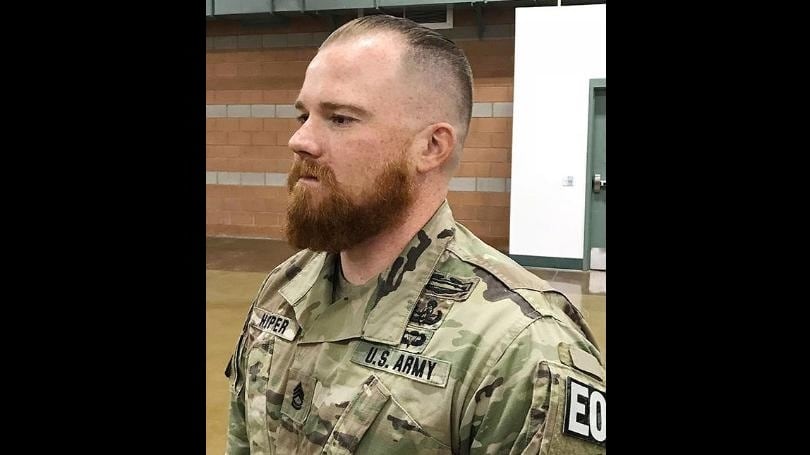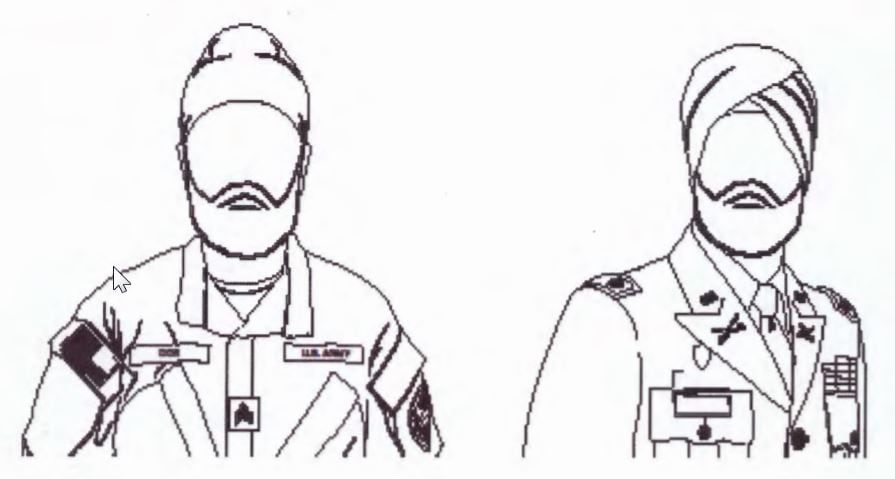A new update to the Navy’s religious accommodations policy will allow Sikh sailors to wear turbans for the first time, following the Air Force’s decision to do the same in early February.
Previously, religious head coverings like Muslim hijabs and Jewish kippahs were allowed because they did not interfere with uniform covers, but per the March 16 instruction from the Bureau of Navy Personnel, there is no longer a requirement that an approved religious head covering be worn underneath the cover prescribed by the uniform of the day.
“We are appreciative that the U.S. Navy has taken a step forward in securing accommodations for observant Sikh Americans who wish to serve with their religious articles of faith,” Giselle Klapper, Sikh Coalition’s staff attorney, said in a March 19 release.
Navy uniform regulations vary based on whether a sailor is assigned to shore duty, sea duty or a ship underway, as safety concerns are higher with each environment.
“Except in the case of safety or protective headgear required by a Sailor’s duties, position or assignment, Sailors granted a religious accommodation for head coverings are not required to wear military headgear in addition to their religious head covering if such military headgear would violate their sincerely held religious beliefs,” the instruction reads.
For instance, a sailor working the flight deck of an aircraft carrier could not safely wear his turban underneath the helmet required during flight operations, and so a religious accommodation would not apply in that scenario.
That raises some alarm, according to the Sikh coalition.
“... we have outstanding questions and concerns about the durability of these accommodations and the extent to which they allow service in all Navy job environments," Klapper said.
The Navy is also treating hair and head coverings differently, according to the instruction, though they are linked for Sikh sailors.
In the Navy, religious exemptions that have to do with uniforms and grooming are requested via petition to commanding officers at the O-6 level. The March 16 instruction updates the previous guidance, which required those captains to send their recommendations to the Chief of Naval Personnel, also streamlines the process for religious head coverings.
Now, an O-6 can approve those requests on their own, and only have to notify CNP if they are recommending a denial. However, requests for men to grow out their hair ― as is custom, to be wrapped up underneath the turban ― have to be approved by CNP.
"We look forward to continuing our conversations with Navy leadership to ensure that observant Sikhs have true equality of opportunity in pursuing careers in the Navy,” Klapper said.
RELATED

The American Sikh community has led a charge, including multiple lawsuits against the Defense Department, in the last decade for religious accommodations that allow observant men to wear the turbans and beards required by that faith. They won a substantial victory in 2017, when the Army approved turbans, patkas (an under-turban head covering) and hijabs in uniform, as well as neatly-groomed beards.
While Sikhs had been the catalyst, in the years since, soldiers of Norse pagan faith have also secured exceptions to uniform policy allowing them to grow beards.
Meghann Myers is the Pentagon bureau chief at Military Times. She covers operations, policy, personnel, leadership and other issues affecting service members.





